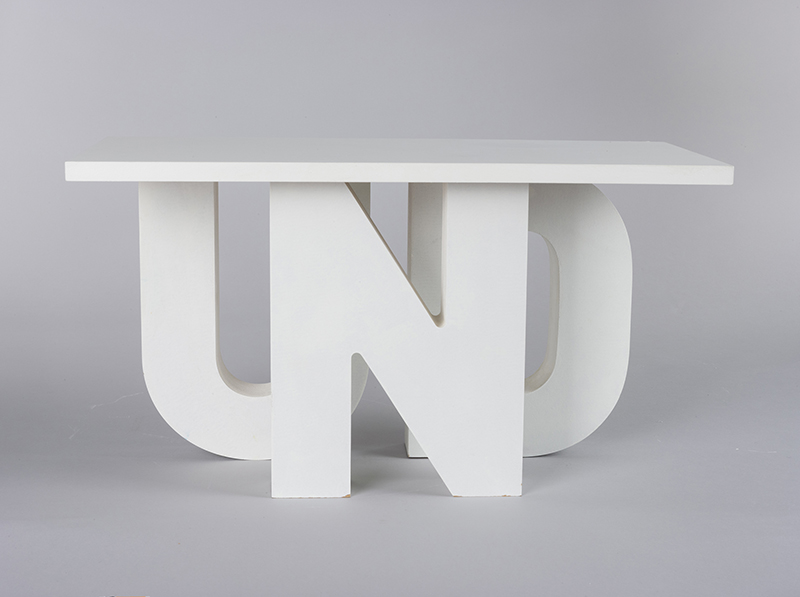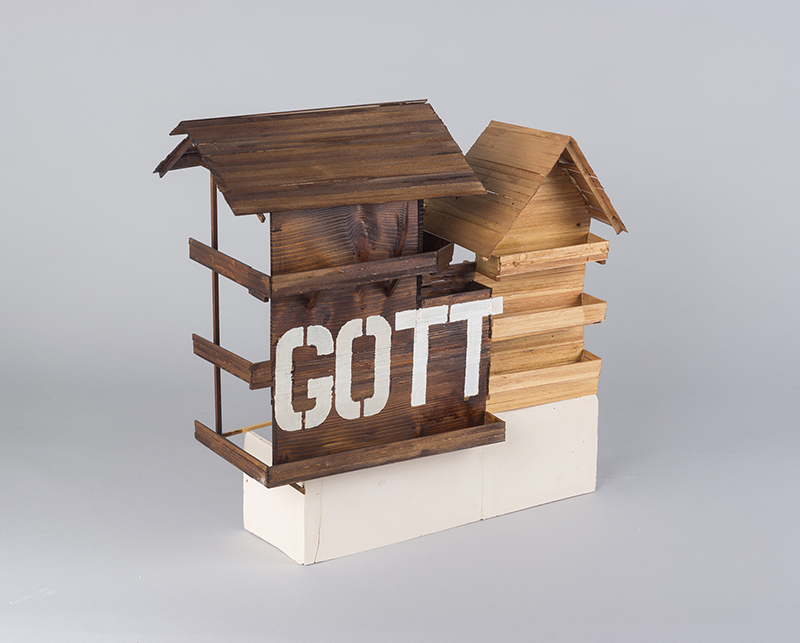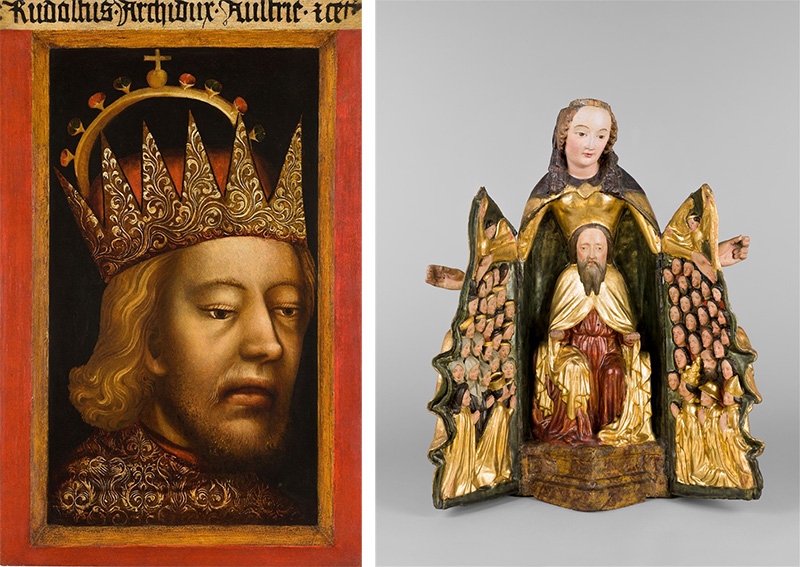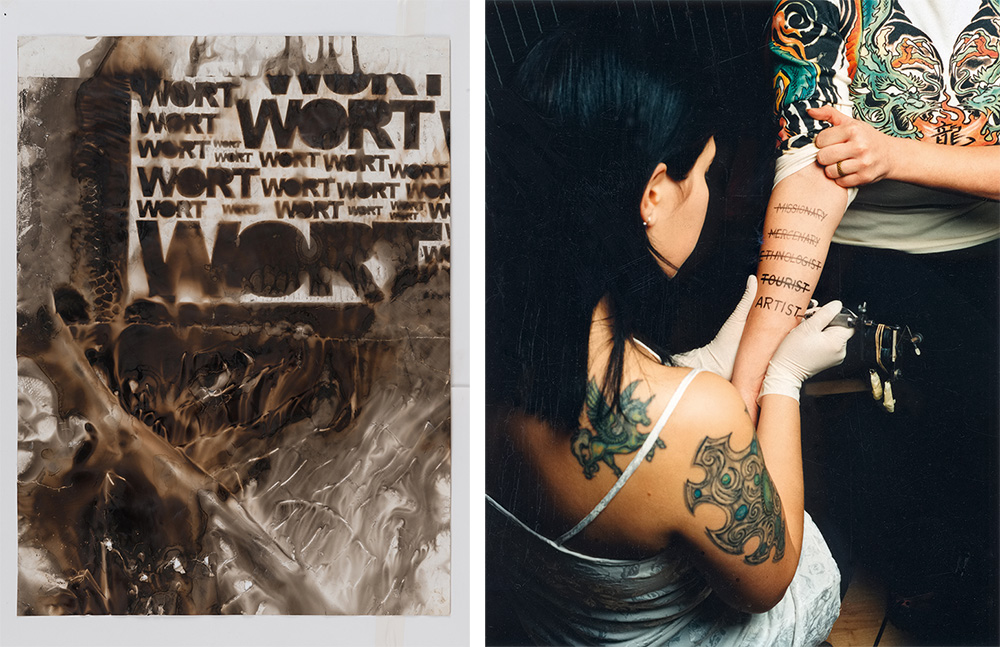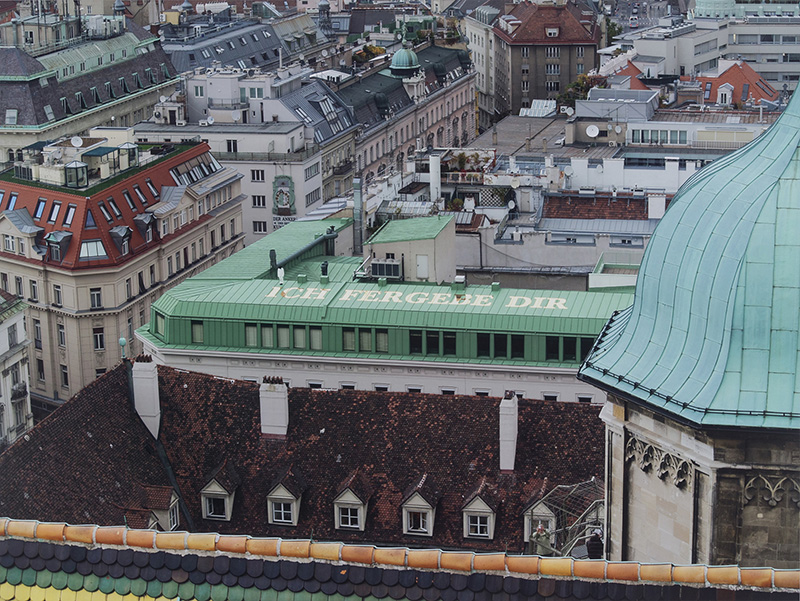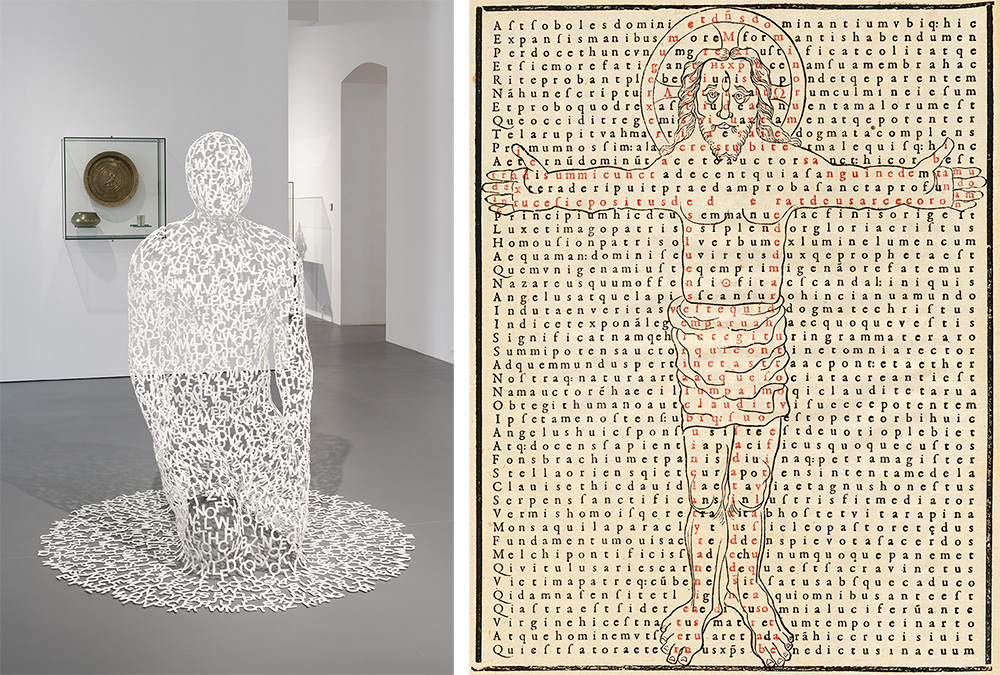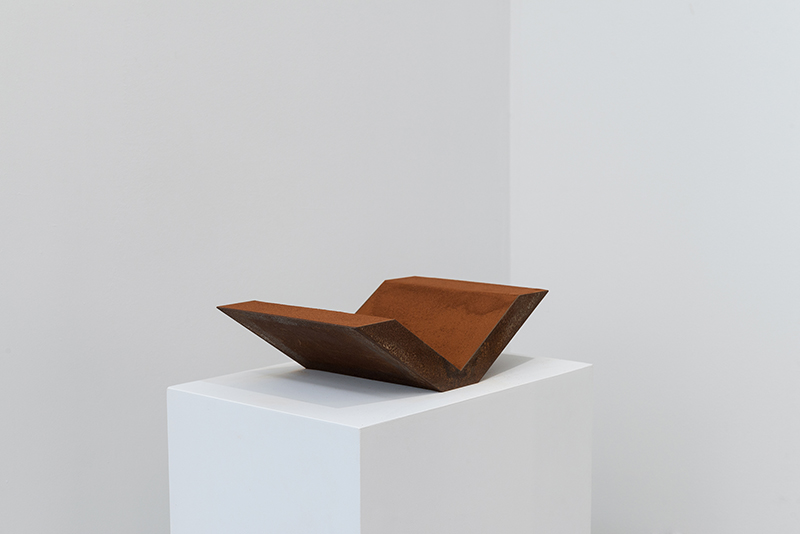BOOK:Dom Museu Wien,De Gruyter Publications
 What can be the exhibits of the museum of the Archdiocese of Vienna? For someone who has raised and grown up in an orthodox environment the only answer is “Religious Paintings, Icons, Sculptures and Treasures”. So it was a pleasant surprise the opening of the monograph “Dom Museum Wien Art, Religion, Society” by De Gruyter Publications, that commemorates the re-opening of the museum and presents fascinating items from the collections, as well as an account of the architectural re-design of the building, with text and images. Well-known authors analyze selected historic exhibits from the Middle Ages and the Baroque period, elaborating new perspectives. In the Museum on presentation are unique Religious treasures like the “Shrine of Madonna” (c. 1420-30) , these shrines are extremely complex works and inter-weave 3 images on a single sculpture, only 65 of this kind of work have survived. One of the Museum’s is the seminal “Portrait of Rudolf IV, Duke of Austria” (1360-65), on a upright panel the Duke is depicted as a bust against a neutral backdrop, the head appears in an oblique view and the gaze is undirected (all there are characteristics of standard modernist portraiture). but the real surprise are the Otto Mauer Collection and its Collection of Contemporary Art. Monsignor Otto Mauer was an exceptionally gifted theologist, art collector and patron. During the Nazi era, he was arrested several times and banned from preaching. In 1946 Otto Mauer was clergyman of the Catholic Action. In 1954 he founded the famous gallery next St. Stephen. Monsignor Otto Mauer was a driving force behind the renewal of Austrian art after the WWII. The collection includes works of the “classics” of the Viennese postwar avant-garde such as Maria Lassnig, Oswald Oberhuber, Bruno Gironcoli and of course the group Hollegha, Mikl, Prachensky, Rainer, as well as graphics of international, the then generation of influential artists such as Kubin, Picasso, Chagall, Giacometti, Goya and Delacroix. The Otto Mauer Collection is a cultural witness in a double sense. Not only is it an important collection of striking Austrian and European post-war graphics in the sense of art history, it also testifies to the activity of a charismatic and powerful personality at the center of a cultural-historical epoch. The activity Monsignor Otto Mauers, is today continued in the Dom Museum Wien.. Young, contemporary artists are regularly bought by the museum and shown in special exhibitions, forming the basis of an expansion of the collection started by Otto Mauer.-Dimitris Lempesis
What can be the exhibits of the museum of the Archdiocese of Vienna? For someone who has raised and grown up in an orthodox environment the only answer is “Religious Paintings, Icons, Sculptures and Treasures”. So it was a pleasant surprise the opening of the monograph “Dom Museum Wien Art, Religion, Society” by De Gruyter Publications, that commemorates the re-opening of the museum and presents fascinating items from the collections, as well as an account of the architectural re-design of the building, with text and images. Well-known authors analyze selected historic exhibits from the Middle Ages and the Baroque period, elaborating new perspectives. In the Museum on presentation are unique Religious treasures like the “Shrine of Madonna” (c. 1420-30) , these shrines are extremely complex works and inter-weave 3 images on a single sculpture, only 65 of this kind of work have survived. One of the Museum’s is the seminal “Portrait of Rudolf IV, Duke of Austria” (1360-65), on a upright panel the Duke is depicted as a bust against a neutral backdrop, the head appears in an oblique view and the gaze is undirected (all there are characteristics of standard modernist portraiture). but the real surprise are the Otto Mauer Collection and its Collection of Contemporary Art. Monsignor Otto Mauer was an exceptionally gifted theologist, art collector and patron. During the Nazi era, he was arrested several times and banned from preaching. In 1946 Otto Mauer was clergyman of the Catholic Action. In 1954 he founded the famous gallery next St. Stephen. Monsignor Otto Mauer was a driving force behind the renewal of Austrian art after the WWII. The collection includes works of the “classics” of the Viennese postwar avant-garde such as Maria Lassnig, Oswald Oberhuber, Bruno Gironcoli and of course the group Hollegha, Mikl, Prachensky, Rainer, as well as graphics of international, the then generation of influential artists such as Kubin, Picasso, Chagall, Giacometti, Goya and Delacroix. The Otto Mauer Collection is a cultural witness in a double sense. Not only is it an important collection of striking Austrian and European post-war graphics in the sense of art history, it also testifies to the activity of a charismatic and powerful personality at the center of a cultural-historical epoch. The activity Monsignor Otto Mauers, is today continued in the Dom Museum Wien.. Young, contemporary artists are regularly bought by the museum and shown in special exhibitions, forming the basis of an expansion of the collection started by Otto Mauer.-Dimitris Lempesis

